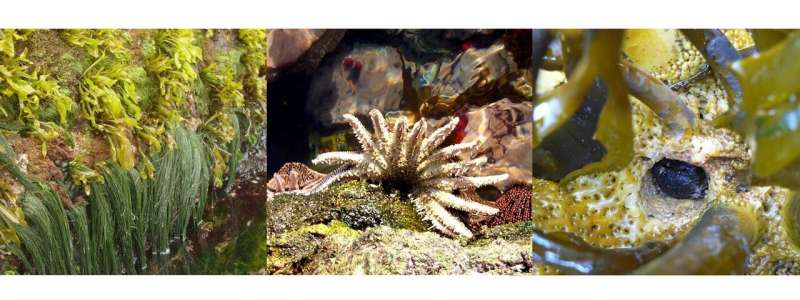Diversity of inter-species interactions affects functioning of ecological communities

Mathematical modeling suggests that the diversity of interactions between species in an ecological community plays a greater role in maintaining community functioning than previously thought. Vincent Miele of the CNRS in Lyon, France, and colleagues present these findings in PLOS Computational Biology.
Ecologists have long been interested in how species diversity—the number of species found in a given community—affects the functioning of that community. Communities are also diverse in the types of ecological interactions that occur between species, but research on these communities rarely considers these complex interaction networks.
To better understand the significance of interaction diversity, Miele and colleagues employed a mathematical model of an ecological community that incorporates a variety of interaction types, including competition between predators and competition for space between species that are immobile. They used the model to investigate how the abundance and intensity of multiple interactions affects communities.
The analysis showed that when the entire bundle of ecological interactions are considered simultaneously—incorporating feeding, inter-species facilitation, and competitive interactions—their diversity affects the community's diversity of species and overall function. Interaction diversity also strengthens the relationship between species diversity and community functioning compared to situations where only feeding interactions are taken into account.
These findings suggest that removing species from the community has a greater impact on functioning if different kinds of interactions are considered. This also suggests that existing models that ignore the variety of interaction types underestimate the consequences of species losses.
"Our study shows that considering the variety of interaction types matters for understanding how nature functions and predicting how it will respond to global changes," says Sonia Kéfi, corresponding author of the study. "This is especially relevant in a time when many species are considered to be threatened with extinction."
Next, the researchers plan to investigate whether some species play different roles regarding their position in the complex species interplay when considering the variety of interaction types.
More information: Vincent Miele et al, Non-trophic interactions strengthen the diversity—functioning relationship in an ecological bioenergetic network model, PLOS Computational Biology (2019). DOI: 10.1371/journal.pcbi.1007269
Journal information: PLoS Computational Biology
Provided by Public Library of Science



















